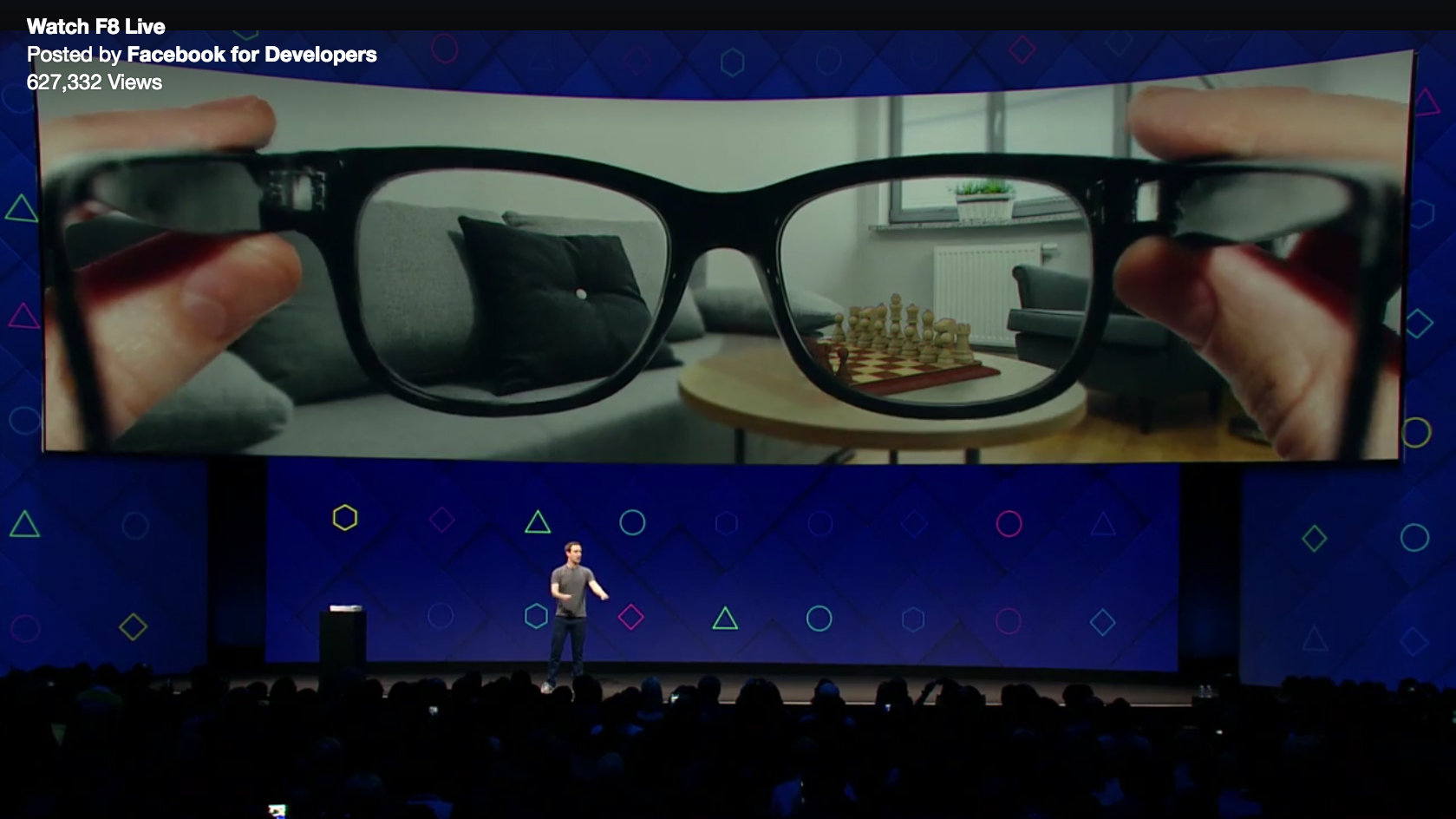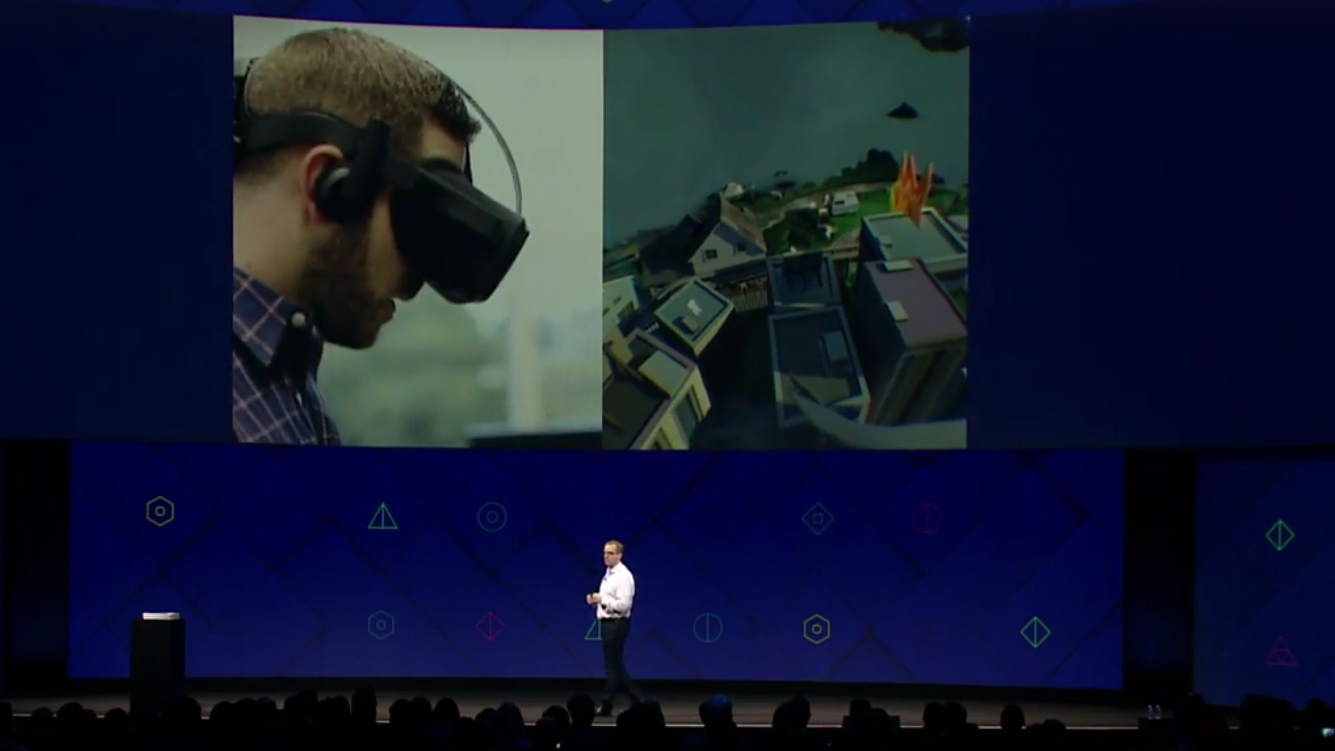Facebook just teased how the wireless Oculus headset works

Although Facebook didn’t come right out and say it today, it appears as though the wireless, room-scale virtual reality headset you’ve been dreaming of might be a reality in the next two years. The headset you’ve been wishing for is called the Oculus Santa Cruz headset, and while it’s still in prototype form right now, it’s coming together quicker than anyone expected.
We got our second look at the headset this morning at Facebook’s F8 keynote where the company’s Chief Technology Officer Mike Schroepfer showed a video of the headset in use to demonstrate how far augmented reality and computer vision have come in the last two years.
This sneak peek at Facebook’s Santa Cruz prototype was important for two reasons. Not only did it prove that Facebook has made some substantial progress on the prototype but, more importantly, we found out how the headset is going to use computer vision to cut the annoying cable.
The technique that Schroepfer spent most of his stage time talking about is called SLAM, or Simultaneous Localization and Mapping, and it allows the headset to use four built-in cameras to detect how the environment around you is changing and mirror that movement in the virtual world. “This headset doesn’t require a cellphone. It doesn’t require a PC. No special hardware in your room. You just grab the unit, put it on your head [and] you’re instantly in VR. Now the thing that actually makes this work is SLAM,” Schroepfer said.

Wham, SLAM, thank you ma'am
We’ve always known that Oculus’ Santa Cruz prototype needed a way to track your movement in VR using a camera, but we didn’t know that it used multiple cameras or the algorithm it used.
Schroepfer explained both in detail: “Because this device has four cameras on it, as I’m walking through the real world, those cameras are tracking my movement in the real world and translating those to motions in the virtual world to make sure the virtual world perfectly matches my movements.
“Now, doing this in the VR context is really hard and completely unforgiving. If we get this wrong, your virtual world doesn’t update and you break immersion immediately.”
Sign up for breaking news, reviews, opinion, top tech deals, and more.
If you’ve ever used a headset where something goes wrong, you know that ‘breaking immersion’ here, most likely results in some nauseating side effects, so let’s hope Facebook can iron that out before Santa Cruz comes to market. As to when that might happen, well, Schroepfer wasn’t up for sharing that just yet.
- Don't miss our updated review of the Oculus Rift

Nick Pino is Managing Editor, TV and AV for TechRadar's sister site, Tom's Guide. Previously, he was the Senior Editor of Home Entertainment at TechRadar, covering TVs, headphones, speakers, video games, VR and streaming devices. He's also written for GamesRadar+, Official Xbox Magazine, PC Gamer and other outlets over the last decade, and he has a degree in computer science he's not using if anyone wants it.